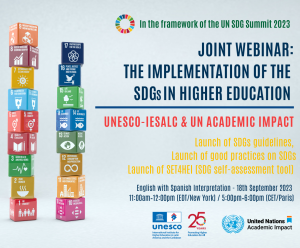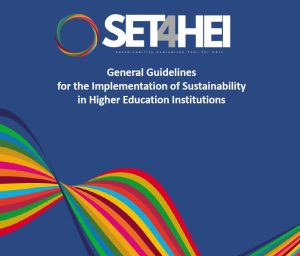How is your higher education institution contributing to sustainable development?
SET4HEI (Sustainability Evaluation Tool for Higher Education Institutions) is a free, online and open resource for higher education institutions to map their current and potential future contributions to the 17 UN Sustainable Development Goals (SDGs).
This is an initiative led by the UNESCO International Institute for Higher Education in collaboration with other UN Agencies and higher education experts across the world.
SET4HEI is available in English and Spanish. French and Arabic versions will be available during 2024.
More information about the launch event can be found in the news section.
Click on individual SDGs below to see how HEIs can contribute to each of them and to access individual assessments.
For example, they are key to train the next generation of social workers, development economists, civil servants in charge of social security and all other professionals who need to understand how economic exclusion affects and is affected by their area of work. Through their research, HEIs can contribute to measuring and better understanding poverty, and finding evidence-based solutions. Internally, HEIs must ensure that low-income students can effectively access and progress through higher education, removing economic barriers associated to tuition fees, learning materials, connectivity and the cost of living. Externally, HEIs can engage with disadvantaged local communities, offering free educational services or volunteering initiatives.

The SET4HEI certification
If you are a higher education institution who excels in the contribution to some of the SDGs and would like to position yourself as a leader in impact to sustainable development, the SET4HEI certification is for you.
Your performance on the selected SDGs will be rigorously assessed and externally validated by peers and experts in the fields in a process coordinated by UNESCO. Only certified institutions receive a UNESCO digital badge per each SDG in which they excel plus feedback on areas for improvement. This badge will be a prestigious signal on the activities HEIs undertake on sustainable development. This badge can be embedded in websites, email and communication materials.
For more information click here.




